Canadian Forum
By Robin Plewes
Reprinted from "Crown Jewels of the Wire", June 2004, page 42
With many new collectors being exposed to the hobby of collecting insulators,
some of the terms we use to describe insulators may seem a bit confusing.
The hobby of insulator collecting may not be quite as old as bottle
collecting, but insulators have been around pretty much as long as glass
bottles. Many of the early glass houses made insulators as a sideline. Early
insulators were a great way to use up end-of-the-day glass from other, more
profitable products. This is perhaps why some of the older insulators have been
found in such attractive colors.
In this column, I will attempt to describe the methods of insulator
identification that collectors use to communicate what they have and it's
condition.
There are so many shapes and styles of insulators, as well as possible
locations of damage, that there was, and is, a need for a detailed
identification system.
Many styles have nicknames such as "Doorknob", "Bullet",
"Beehive", "Pony", "Toll".... and the list goes
on. This is fine for those who know what style the other is referring to, but
with the use of the phone and internet, collecting is no longer a regional
thing. I have heard a Canadian collector use the term "Bullet" and
mean one insulator, while many American collectors refer to a "Bullet"
as a completely different insulator. Confusion results.
One of the hobbies pioneers, N.R. "Woody" Woodward, was doing
research on insulators in the 1960s. He developed a Consolidated Design (CD)
system of identification in order to communicate with insulator manufacturers.
This CD system has been adopted and accepted by the collecting community with
Woody's permission. Incidentally, Woody remains the go-to guy when it comes to
newly discovered styles that surface from time to time. Collectors with an
interest in foreign insulators have been traveling to Europe and South America
and finding styles and manufactures previously unknown to North American
collectors. Occasionally a new North American style will surface, but this is
rare as collectors have been gathering and talking insulators for nearly 40
years now.
So, if I contact another collector and say I have a cd154 Dominion 42, he /
she knows which insulator I'm speaking about, primarily based on the embossing.
A good example of this system's affectivity would be the description of a no
name, no embossing cd292, power insulator. It's not commonly found, there is no embossings on it and it's about 4-3/4" high. Not a lot to go on if
the cd style number is left out of the conversation.
I'm not going to
describe each cd style, but there are some basics to the cd numbering system
that are easy to describe in this forum.
CD100 - CD144 Single skirt threaded
insulator, side wire groove.
CD145 - CD184 Double skirt threaded insulator, side
wire groove.
CD185 - CD198 Threaded pinhole goes all the way through the
insulator.
CD190 - CD205 Threaded transposition styles with several wire grooves
and skirts.
CD205 - CD375 Assorted power styles.
CD400 - CD699 Foreign
insulators from outside North America. (Some foreign insulators are the same
style as North American styles, and have the same designations cd154, cd106 etc.
)
CD700 - CD796 Threadless styles
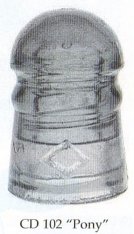
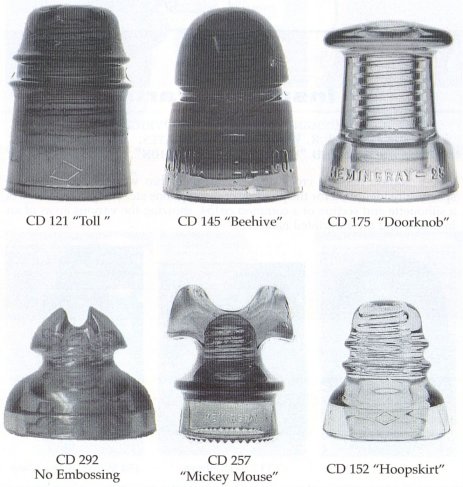
There are other numbers for styles / shapes such as battery rests, strains
and spools.
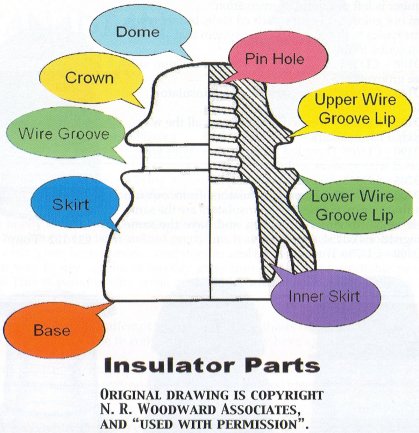
Like a bottle's neck or crock's lip, an insulator has various areas that are
specifically identified for the purpose of descriptions etc. The picture above
is a silhouette and section of a common cd154, showing the various areas of an
insulator and the associated names.
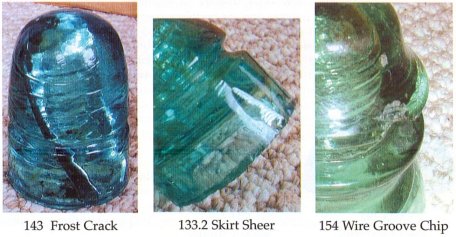
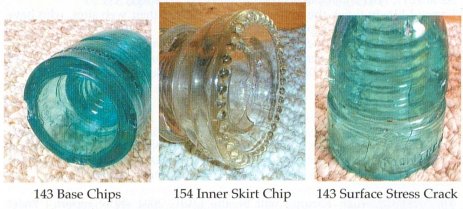
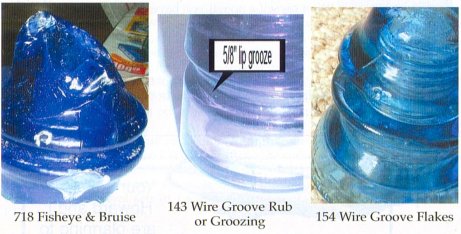
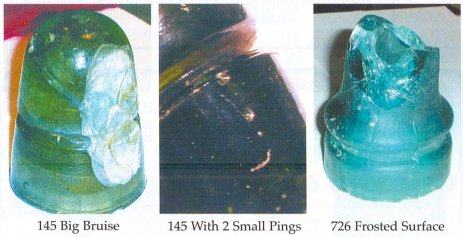
As always, I trust this has made for interesting reading. I would like to
thank the following collectors and their web sites, who have allowed me to use
their pictures in this column.
Ian Macky, CA. - http://peninsulators.org
Bill Meier, MA. - http://www.insulators.com
Nathan Lamkey, OR. - http://www.myinsulators.com/oldglass
N. R. Woodward, TX.
Daryl Richardson, ME.
Other News:
The first annual Southwestern Ont. Insulator Meet will be held June 5th on
the Nicpon farm (outside tables), in Mount Brydges, Ont. Contact Tom Iannelli
519-641-0098 or Barrett Nicpon 519-264-2572 for more information.
The next Canadian Forum will be the OVIC 2004 show report. We're expecting to
have some impressive Canadian threadless on display.
Feel free to drop CJOW or myself a note if you have anything you would like
to see covered in the way of Canadian insulator news or information.
Good Collecting........ Robin
Robin Plewes, Almonte Ontario. Phone: 613-256-7638
Email: robin.plewes@cmcelectronics.ca
| 